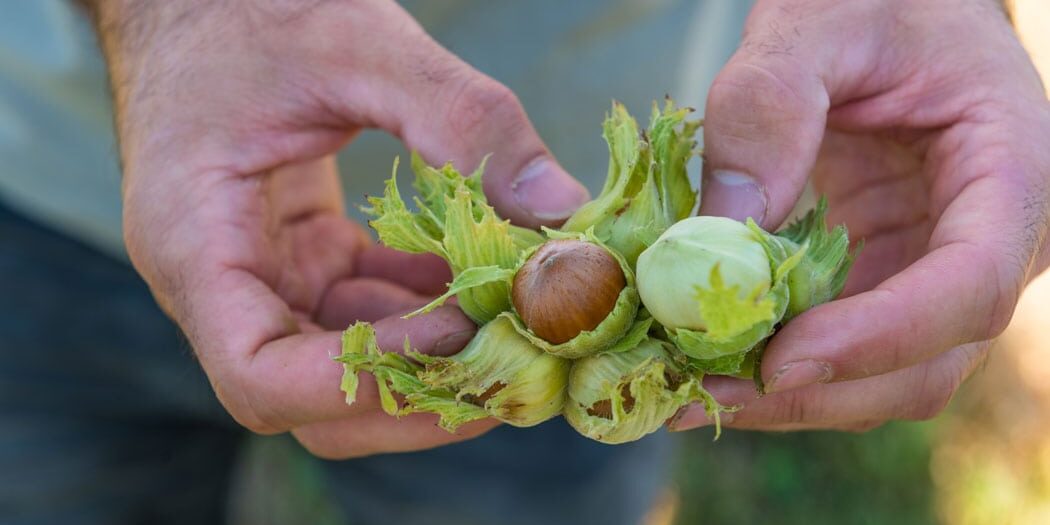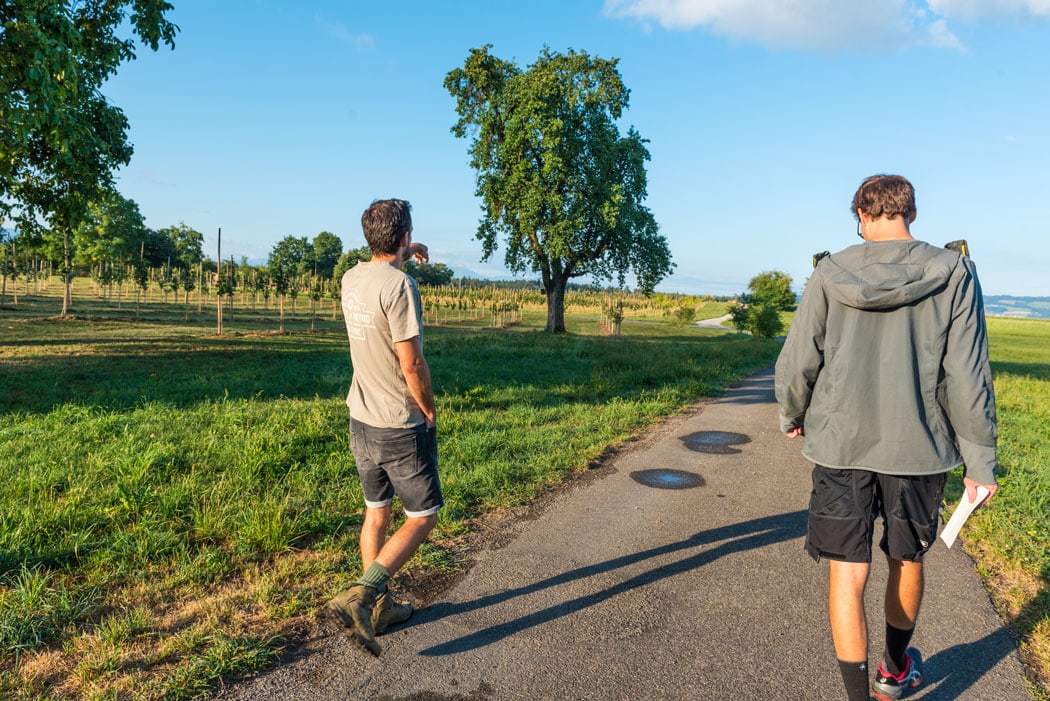More biodiversity and sustainable nutrition thanks to Swiss hazelnuts

Hazelnuts are a valuable source of vegetable protein and are important for a balanced and sustainable diet. It is therefore also in great demand in this country. However, Swiss hazelnuts are still in short supply: around 90% of the hazelnuts consumed here come from Turkey. Together with Stefan Gerber, a farmer from Mettmenstetten ZH, we want to change this. Last year, we planted 1,600 hazelnut trees on an area of 2.5 hectares. This summer, we planted a hazelnut variety garden consisting of 50 varieties with two trees per variety.
Why there are hardly any Swiss hazelnuts
Hazelnuts are native to Switzerland. There are also plenty of sunny and dry locations in this country. Nevertheless, hazelnuts are rarely cultivated because it is difficult to obtain good planting material and there is hardly any knowledge about the choice of variety and cultivation management. The lack of political support measures also makes hazelnut cultivation unattractive for local farmers. Instead, other foods from monocultures continue to be grown, with negative consequences for biodiversity and the climate.
Why do we need Swiss hazelnuts?
The demand for locally produced hazelnuts is increasing. Swiss hazelnuts also contribute to a sustainable and healthy diet with local products. Thanks to local, short and transparent supply chains, less CO2 is emitted and traceability is easier than with hazelnuts that are imported from far away. Trees play an important role in regenerative agriculture: if we use hazelnut trees, the soil can recover and biodiversity is promoted. In this way, we are further developing Swiss agriculture towards more climate-friendly production.




Hazelnuts in the canton of Zurich
Our project promotes biodiversity at all three levels:
- Thanks to the first large hazelnut plantation in the canton of Zurich, we are making a long-term contribution to greater ecosystem diversity in Switzerland.
- We contribute to greater biodiversity by planting hedges, flowering and nutrient-poor strips and building meadow castles.
- The hazelnut variety garden, which secures and promotes the existence of the cultivated hazelnut in Switzerland, enables more genetic diversity.
Stefan relies on the regular support of volunteers to maintain this variety garden. Through this help and public tours, we enable an exchange between consumers and producers and build a bridge between the urban and rural population. In this way, we increase mutual understanding and appreciation of local agriculture.
How big is the impact?
To get an answer to this question, we are accompanying the project scientifically. We are measuring how biodiversity and soil condition develop over the years and what the ecological balance of our Swiss hazelnuts looks like. We are also investigating which soil and crop management measures work.
We share this generated knowledge on various channels in order to reach interested producers in particular and thus further develop sustainable agriculture together and collaboratively.

Support the crowd container community
With a financial contribution we stay tuned. Whether with our innovative projects, at various events, in direct exchange with producers or in our videos: We explore your questions and change the way food is produced, traded and consumed today - always with the aim of getting closer to our vision of a diverse, climate-positive agriculture. Thank you for your support!
A blog post worth reading on the subject of hazelnuts: https://blog.nationalmuseum.ch/2022/12/24-kalorien-fuer-aschenbroedel/?mtm_campaign=Newsletter
Hi Anna, thanks for sharing the link! Wow, hazelnuts were already being eaten 230,000 years ago...
Are children also welcome to help with the hazelnut collection on Saturday? They love to collect hazelnuts and already do this in the playground and in the neighborhood...
Hello Yves, of course :). Children are very welcome! However, there won't be any hazelnuts to collect, the trees are still too small for that or the nuts have already been removed before they ripen so that the trees put their energy into growing and not into ripening the nuts. But there are still some apple trees, so the children would certainly be able to occupy themselves there. Best regards, Beni
Is herbicide-free also an issue?
Hello Christof, thank you for your question. As you rightly pointed out, Stefan used herbicides again this summer. As soon as the trees are bigger and the trunks more robust, mechanical tillage will also be easier. In addition, the conversion to organic farming is planned for next year. Accordingly, herbicides will then no longer be used. Kind regards, Beni